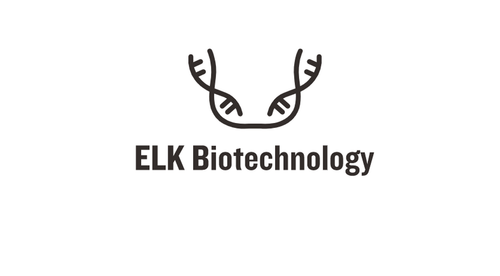Product Description
Mouse Phosphatidylethanolamine-binding protein 1 (PEBP1) ELISA Kit | KTE70774 | Abbkine
Application: This Mouse Phosphatidylethanolamine-binding protein 1 (PEBP1) ELISA Kit employs a two-site sandwich ELISA to quantitate PEBP1 in samples. An antibody specific for PEBP1 has been pre-coated onto a microplate. Standards and samples are pipetted into the wells and anyPEBP1 present is bound by the immobilized antibody. After removing any unbound substances, a biotin-conjugated antibody specific for PEBP1 is added to the wells. After washing, Streptavidin conjugated Horseradish Peroxidase (HRP) is added to the wells. Following a wash to remove any unbound avidin-enzyme reagent, a substrate solution is added to the wells and color develops in proportion to the amount of PEBP1 bound in the initial step. The color development is stopped and the intensity of the color is measured.
Detection Method: Colorimetric
Conjugate: N/A
Sample Type: Cell culture supernatants#Serum#Plasma#Other biological fluids
Assay Type: Multiple steps standard sandwich ELISA assay with a working time of 3-5 hours. It depends on the experience of the operation person.
Kit Component: • Mouse Phosphatidylethanolamine-binding protein 1 microplate
• Mouse Phosphatidylethanolamine-binding protein 1 standard
• Mouse Phosphatidylethanolamine-binding protein 1 detect antibody
• Streptavidin-HRP
• Standard diluent
• Assay buffer
• HRP substrate
• Stop solution
• Wash buffer
• Plate covers
Features & Benefits: Mouse Phosphatidylethanolamine-binding protein 1 (PEBP1) ELISA Kit has high sensitivity and excellent specificity for detection of Mouse PEBP1. No significant cross-reactivity or interference between Mouse PEBP1 and analogues was observed.
Calibration Range: Please inquire
Limit Of Detection: Please inquire
Usage Note: • Do not mix components from different kit lots or use reagents beyond the kit expiration date.
• Allow all reagents to warm to room temperature for at least 30 minutes before opening.
• Pre-rinse the pipet tip with reagent, use fresh pipet tips for each sample, standard and reagent to avoid contamination.
• Unused wells must be kept desiccated at 4 °C in the sealed bag provided.
• Mix Thoroughly is very important for the result. It is recommended using low frequency oscillator or slight hand shaking every 10 minutes.
• It is recommended that all samples and standards be assayed in duplicate or triplicate.
Storage Instruction: The unopened kit should be stored at 2 - 8°C. After opening, please store refer to protocols.
Shipping: Gel pack with blue ice.
Precaution The product listed herein is for research use only and is not intended for use in human or clinical diagnosis. Suggested applications of our products are not recommendations to use our products in violation of any patent or as a license. We cannot be responsible for patent infringements or other violations that may occur with the use of this product.
Background: RKIP cDNA encodes a protein of 186 amino acids, the sequence of which is 95% identical to the bovine 21- to 23-kD protein. The rat protein shows 85.5% identity with the human protein. highly expressed in the brain and associated with cytosolic proteins and small GTP-binding proteins. Multiple tissue Northern blots revealed the presence of a single mRNA in the different tissues of each species; a single band of 1.8 kb was identified in human, 1.45 kb in mouse, and 1.2 kb in rat tissues. The mRNA is particularly highly expressed in rat and mouse testis, where the level was 30 times higher than that in the brain. PBP is expressed strongly in the cell bodies of oligodendrocytes but only weakly elsewhere. Schwann cells and spinal nerve roots showed intense cytoplasmic PBP immunoreactivity.
Alternative Names: PEBP1; HCNP; PBP; PEBP; RKIP; Raf kinase inhibitory protein; hippocampal cholinergic neurostimulating peptide; prostatic binding protein
Search name: PEBP1; HCNP; PBP; PEBP; RKIP; Raf kinase inhibitory protein; hippocampal cholinergic neurostimulating peptide; prostatic binding protein
Tag: PEBP1
 Euro
Euro
 USD
USD
 British Pound
British Pound
 NULL
NULL












